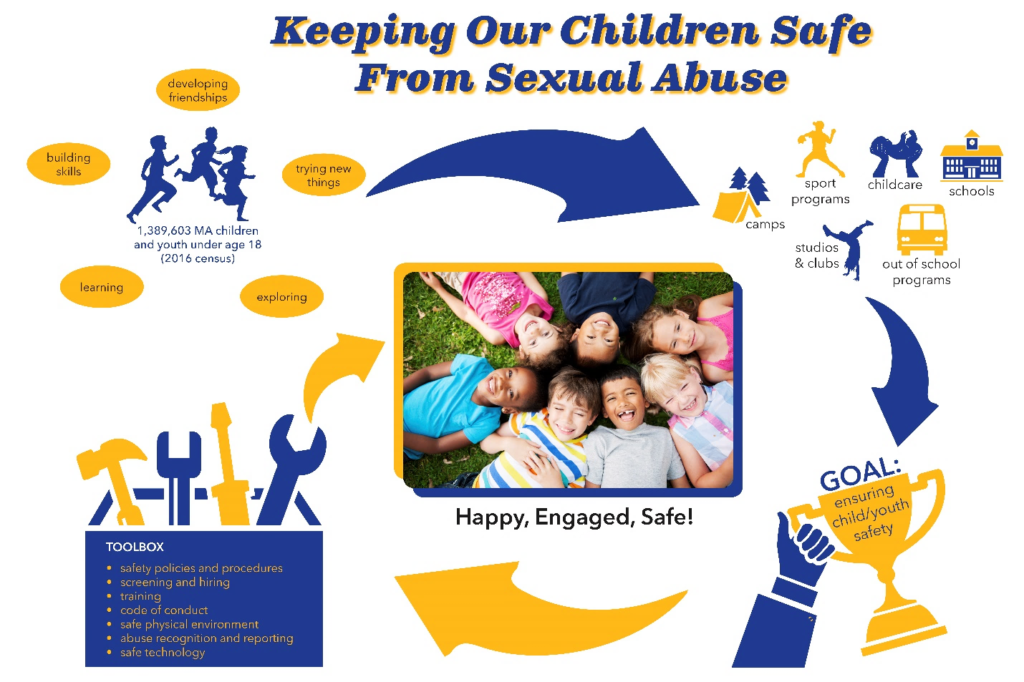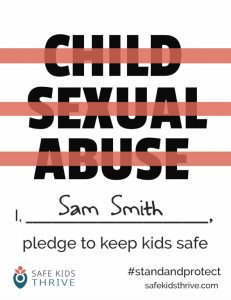Safe Kids Thrive Training
Safe Kids Thrive Training Youth-serving organizations (YSOs) across Massachusetts support…
Home / Read the Report
Children are our most precious resource. When we look into the face of a child we love, we see wonder at every new experience, an openness to the world that is fearless, and a response to human interaction that is both trusting and inviting. We also see an innocence and dependency that make us want to guide, to defend and to protect the child unconditionally – without regard to personal consequence. All children have the right to be protected, to grow, to thrive and to be educated in a safe, secure, and caring environment until the time comes for them to “leave the nest” and establish their place in the wider world. Our children’s/youth’s health, development, survival and dignity are both our legacy and our future.
For many reasons, however, not all children and youth experience their communities, their schools or their homes as safe places. Child abuse, neglect and exploitation affect millions of children in every community in the United States annually and tens of millions more around the globe. Sexual violence against children and youth, in particular, is a reality that lives outside the consciousness of most people and inside a web of silence, secrecy and stigma – until the bold headlines in our newspapers remind us that it still exists.
No one likes to talk about child abuse. It is a difficult topic that reveals sides of human nature that are hard to acknowledge, and pathologies that are hard to understand. And yet, it has been around throughout recorded human history and most likely even before that. We know that child abuse happens without regard to ethnic, racial, religious, or cultural grouping or socio-economic status. No population is immune. This report will not attempt to provide a comprehensive explanation of why child maltreatment exists. Rather, it will focus on the fact that it does exist, and can take place anywhere under the right conditions and circumstances – but, most importantly, child abuse can also be prevented.
There are an estimated 1.4 million children and youth in the Commonwealth under the age of 18 1 who are served daily by a variety of educational institutions, day care facilities, youth development programs, camps, medical facilities, recreation centers, clubs, studios, and faith-based programs to name a few. These “youth serving organizations” (YSOs) can range from a small privately owned business in a rented storefront with a single owner, a small number of employees and tens of children; to a city or town run sports league with hundreds of coaches, assistant coaches and participants; to a state school system with tens of thousands of teachers, employees and volunteers and hundreds of thousands of children. What they all have in common is a desire to teach, mentor, train, inspire and otherwise engage children while at the same time trying to ensure that they are safe and without injury or harm while doing so.
What we know, however, is that children and the organizations that serve them can be vulnerable. Individuals who wish to harm children sometimes succeed in joining YSOs – bypassing the safeguards that are in place, and using the opportunity to cultivate relationships with both the adults and children in the organization that eventually allow them to succeed. The Massachusetts Legislative Task Force on Child Sexual Abuse Prevention has worked together to better understand how this situation happens, on the conditions and circumstances that can allow it to occur, and on the challenges that both large and small organizations face in the detection and prevention of child sexual abuse. The Task Force has used this work to develop a set of strategies, guidelines and tools that can address the conditions that lead to sexually abusive behaviors in YSOs. The resulting prevention framework consists of a combination of raising public awareness, education and training, a prevention toolbox, and on strength-based models and strategies to detect and prevent abusive behavior in the organizations that serve Massachusetts children (See Figure 1 below). Practical guidance is also offered on the implementation of these strategies, and on leadership’s role in building an organizational culture of oversight and accountability.


Join us and commit to learning how you can protect the children you serve.
Customized child sexual abuse prevention guidelines to meet the unique needs of any organization that serves children.
Learning Center Registration
Sign up for an account and start your learning experience.
Free Online Assessment
Let us help you find out where to start.
